Project:
#Interaction Design #Inclusivity
Collaborators: Kev & Glyn (Founders, SurfABLE Scotland), Dr Christine Farion, Aryaman Jacob, Shashank Gedala, Suraj P Suresh, Varanneya Thakore, Yaxuan Li
My Role: UX Designer, Interaction Designer
Duration: 12 weeks
Wave Forward
#Interaction Design #Inclusivity
Collaborators: Kev & Glyn (Founders, SurfABLE Scotland), Dr Christine Farion, Aryaman Jacob, Shashank Gedala, Suraj P Suresh, Varanneya Thakore, Yaxuan Li
My Role: UX Designer, Interaction Designer
Duration: 12 weeks
OVERVIEW
Context
SurfABLE Scotland stands as Scotland's pioneering surf school, designed for children with Additional Support Needs (ASN) as well.
Offering both surfing and swimming lessons, SurfABLE provides a fully adaptive and inclusive experience.

RESEARCH
Understanding the
Understanding the
service
Research methods used:
1. Ethnography
2. Case studies
3. Interviews
4. Participatory Action Research
5. Literature review
2. Case studies
3. Interviews
4. Participatory Action Research
5. Literature review
 Ethnographic observations of a surf lesson
Ethnographic observations of a surf lesson
 Interview with Kev Anderson (Co-Founder, SurfABLE)
Interview with Kev Anderson (Co-Founder, SurfABLE)
 Interview with Caleb Reed (Adaptive Surf Project)
Interview with Caleb Reed (Adaptive Surf Project)
👀 Identified Opportunities
Opportunity 1: Changing Rooms

Opportunity 2: Transfers - An easier way to move equipment

Opportunity 3: Wet suits

Opportunity 4: Van space redesign

🔑 Key Findings
71%
of the students taking the surf classes were diagnosed within the neurodiverse spectrum88%
of the students enrol for one class a week47%
of the families said the first interaction with SurfABLE was key for them to enol for the surf lessonsDEFINE
The Users
Personas:
We met, observed and interviewed 11 families, 17 students, 8 experts and volunteers. And we were able to find three types of surf students.
We met, observed and interviewed 11 families, 17 students, 8 experts and volunteers. And we were able to find three types of surf students.
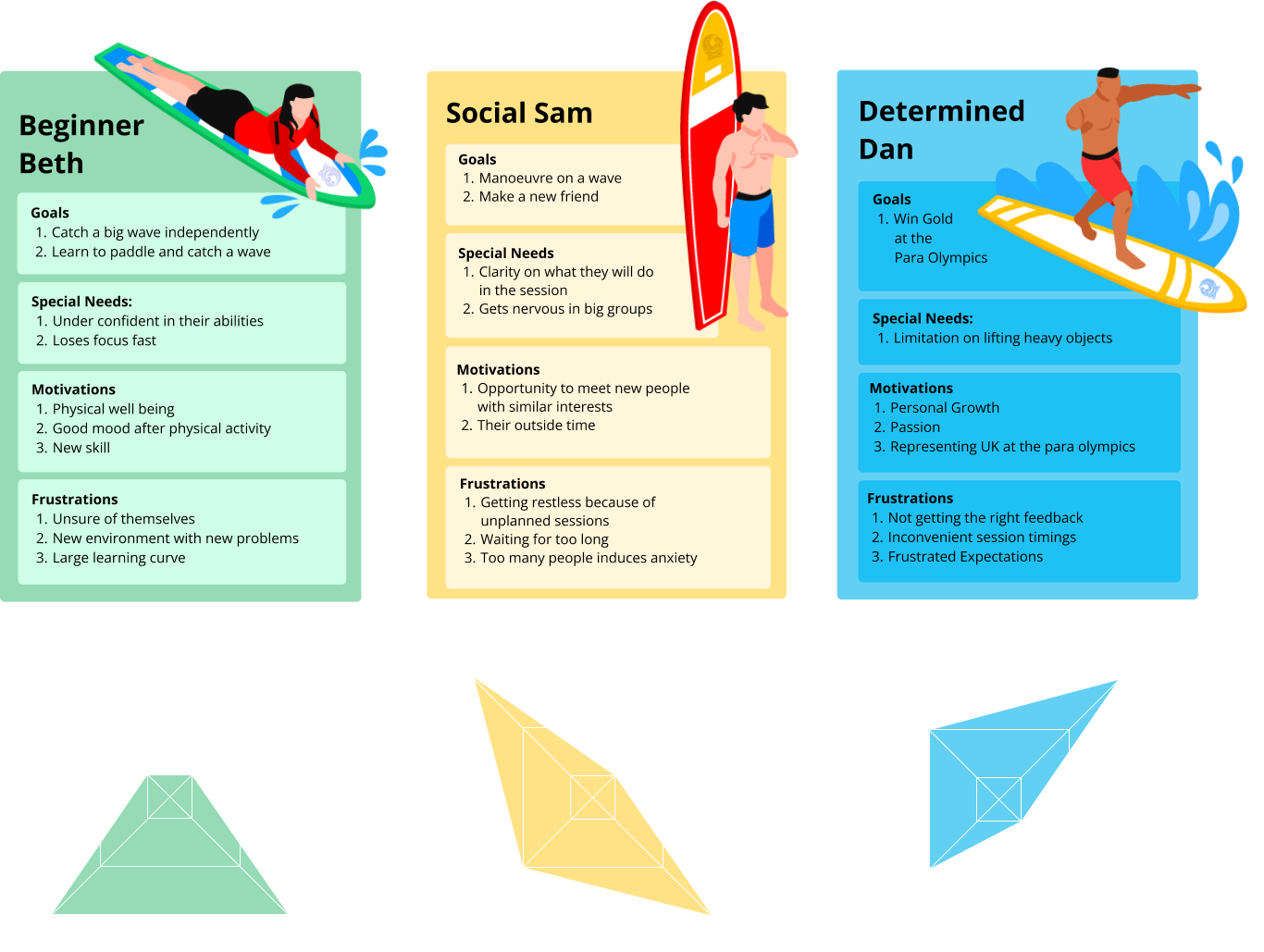
The above graph maps the priorities of each of the personas concerning Health, Skill, Fun and Socializing

📝 Analysis & Ideation

I work with a tonne of sticky notes, noting and grouping down key points from the research.
I do understand that the below image may look EXTREEEEEMMMEEELYYYY complicated but it isn’t, we connected key codes from our research, grouped them into various themes, ideated on these themes and mapped out the impact of these ideas on the students, tutors, cost feasibility and time to deploy.

Fig: Thematic analysis
DESIGN
Prototyping
📋Planner:
Form exploration for Water bottle

From exploration for graphic organizer
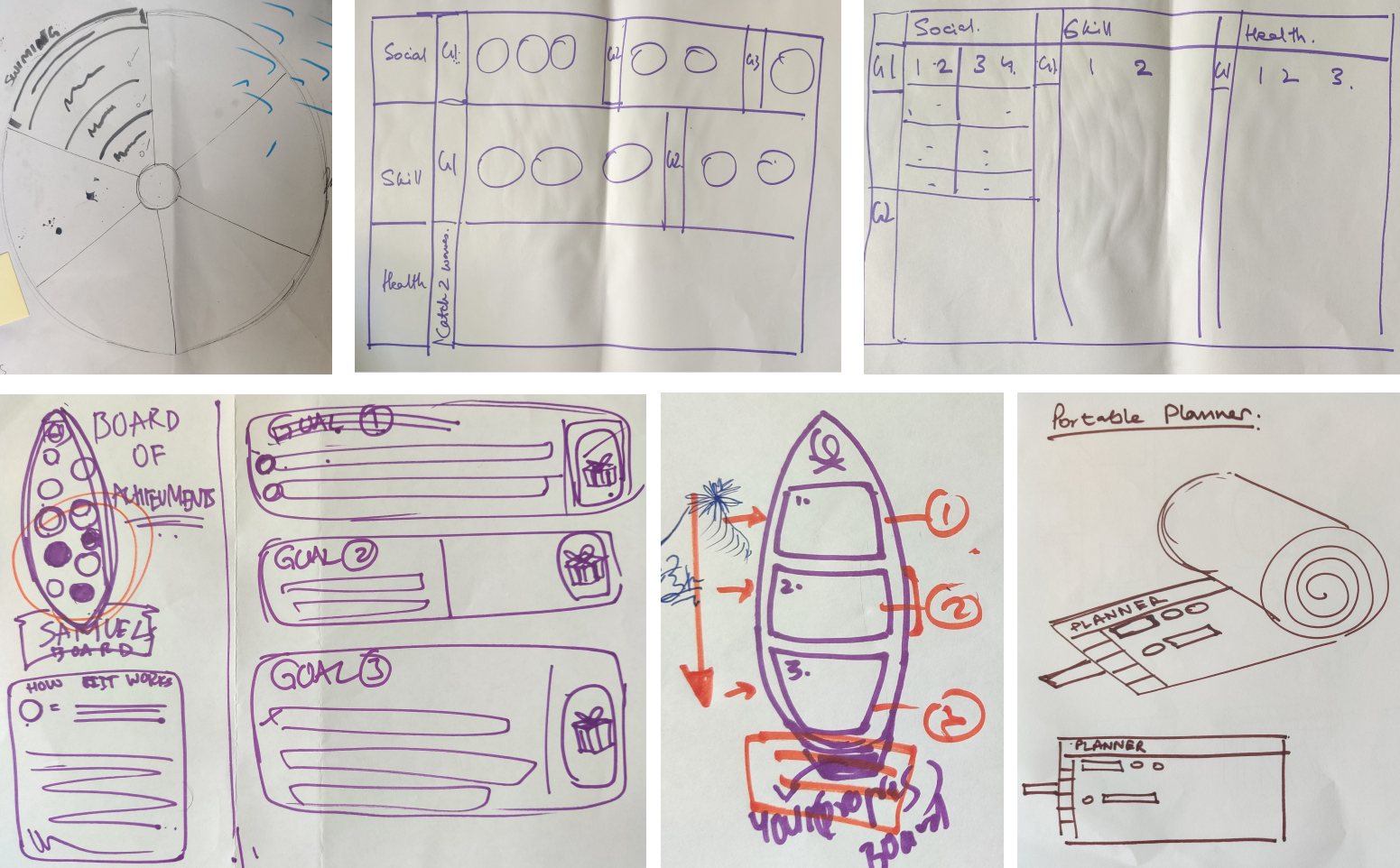
Final Planner Design

🎖️ Rewards
All the patch designs were made on the software Hatch Embroidery 3 using the BROTHER Embroidery machine.
Various types of stitches and fabric were tested to find the best type of finish for the patches.

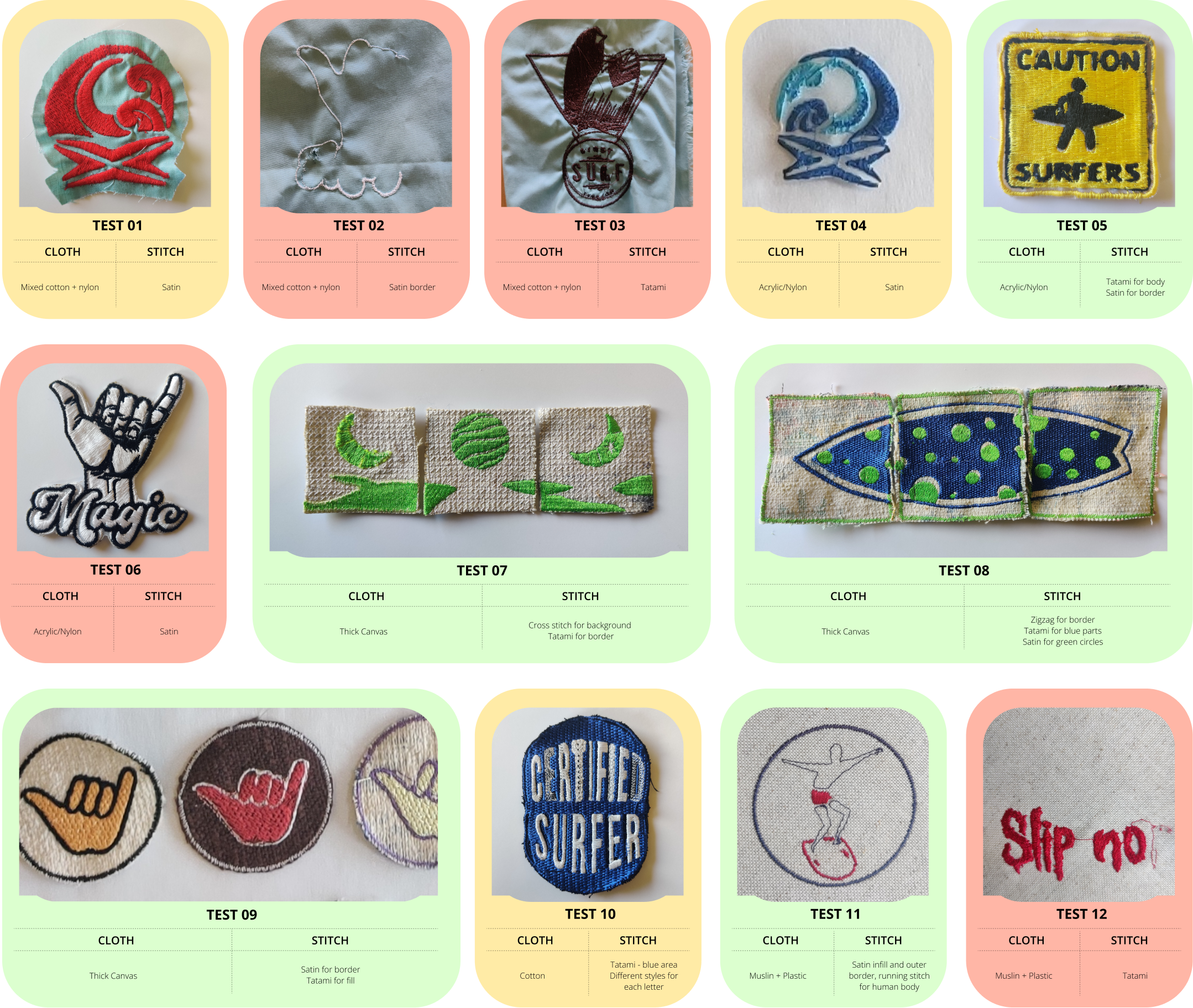
The materials used for making the mini surfboards are plywood, thick mount board and acrylic sheets. The designs were laser engraved and on some we stuck a few stickers to add colorful graphic elements.
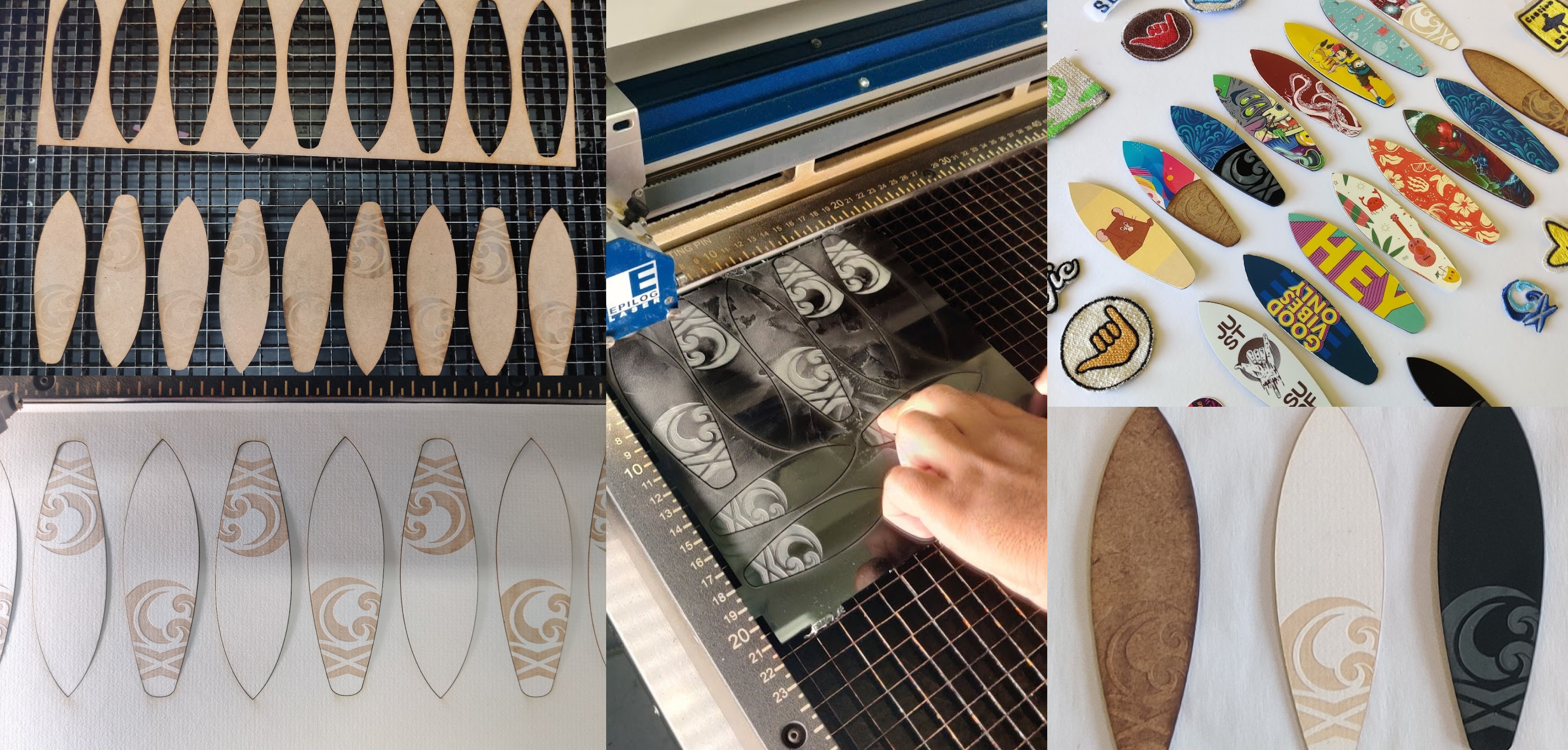
👜 Surfboard bag
Nearly every participant and volunteer had some kind of a bag with them for the session whether to carry their towels, snacks or water bottles.
So we tried adding two belt-like structures so that a structure like a surfboard could be carried.

WORKSHOP
Testing


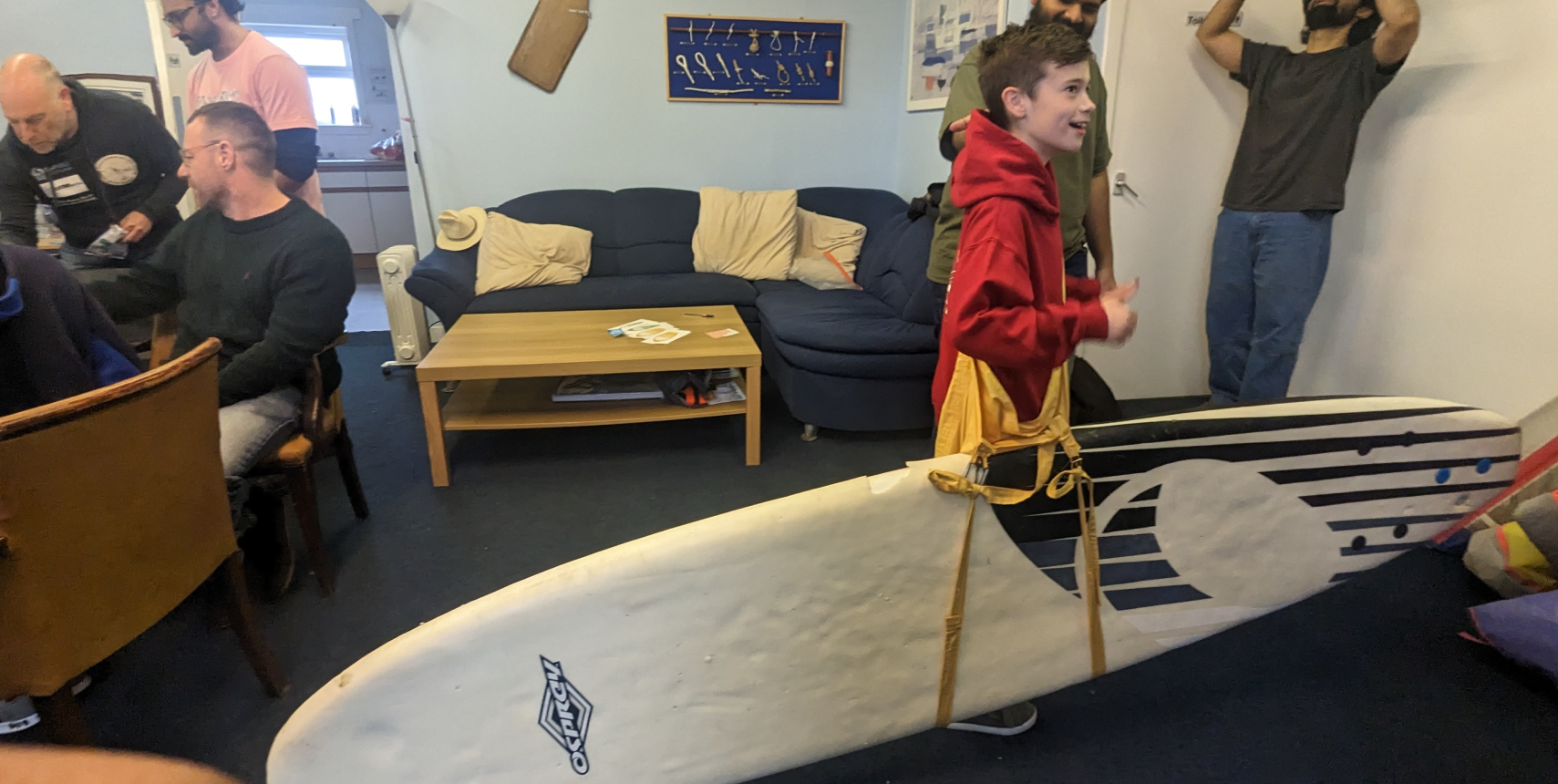

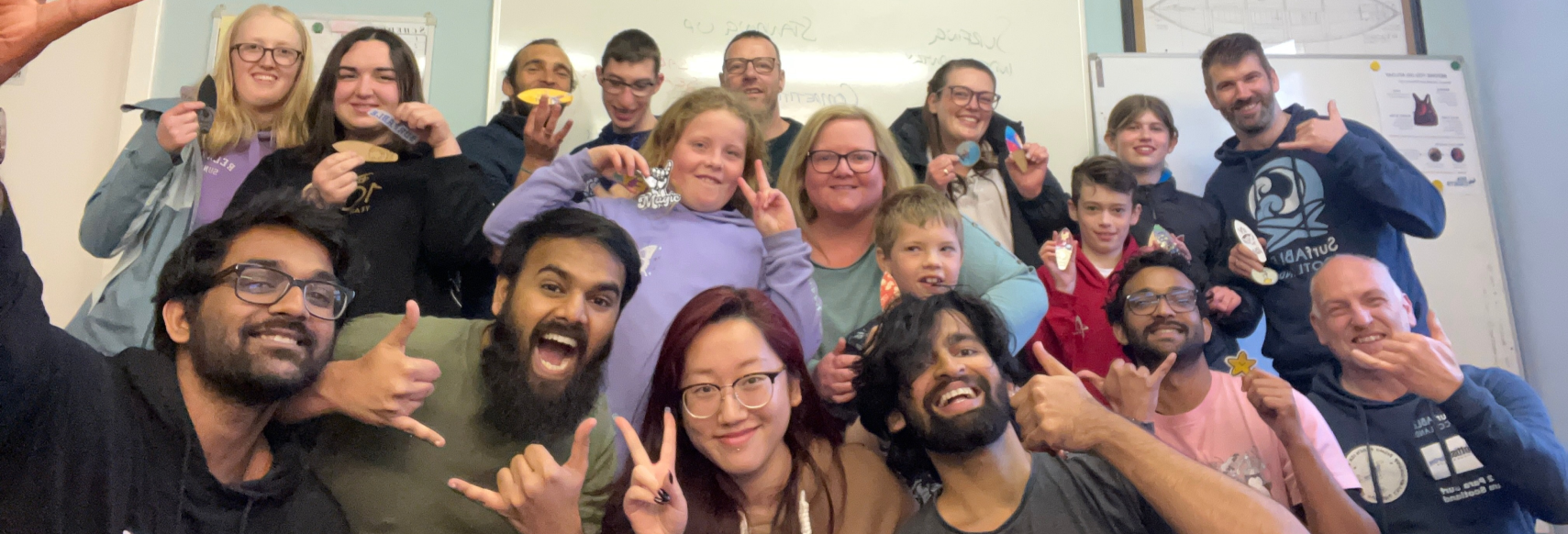
Schedule time with me if you want to discuss how we organized the workshops and how we tested the system with the participants.
OUTCOME
Design
The final design was a system that let surf students map out their goals and help them carry their surfboards.
1. Surfboard bag:
A hands-free surfboard holding bag. The bag also has space for personal belongings.
![]()
A hands-free surfboard holding bag. The bag also has space for personal belongings.

2. Graphical organizer:
Write down goals and steps to achieve them. This can be attached to the surf bag.
Write down goals and steps to achieve them. This can be attached to the surf bag.

3. Rewards:
Different types of patches for each goal that the students complete.
![]()
Different types of patches for each goal that the students complete.
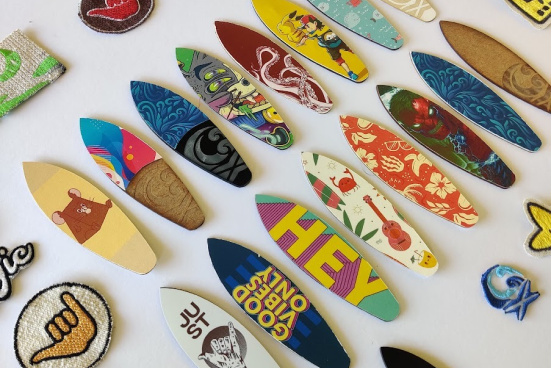
BUSINESS
Impact
For the initial few weeks, the students who scheduled a class a week started opting for two classes a week to smash their surf goals.
After running this intervention for two months, the average student registration increased from 4 classes a month to 6 classes a month.
Other visible impacts that could be directly correlated with the intervention are:
After running this intervention for two months, the average student registration increased from 4 classes a month to 6 classes a month.
Other visible impacts that could be directly correlated with the intervention are:
STUDENT
Impact
1. Facilitates micro-interactions:
3. Promotes accountability and transparency:
5. Supports habit formation:
- Graphical organizer on the bag
- Enhances communication of session goals among participants, volunteers, and coaches
- Flexible learning despite volunteer changes
3. Promotes accountability and transparency:
- Visual progress for participants and caretakers
- Celebrations and rewards foster pride and motivation
5. Supports habit formation:
- Aids in self-regulated learning
New Student Journey Map
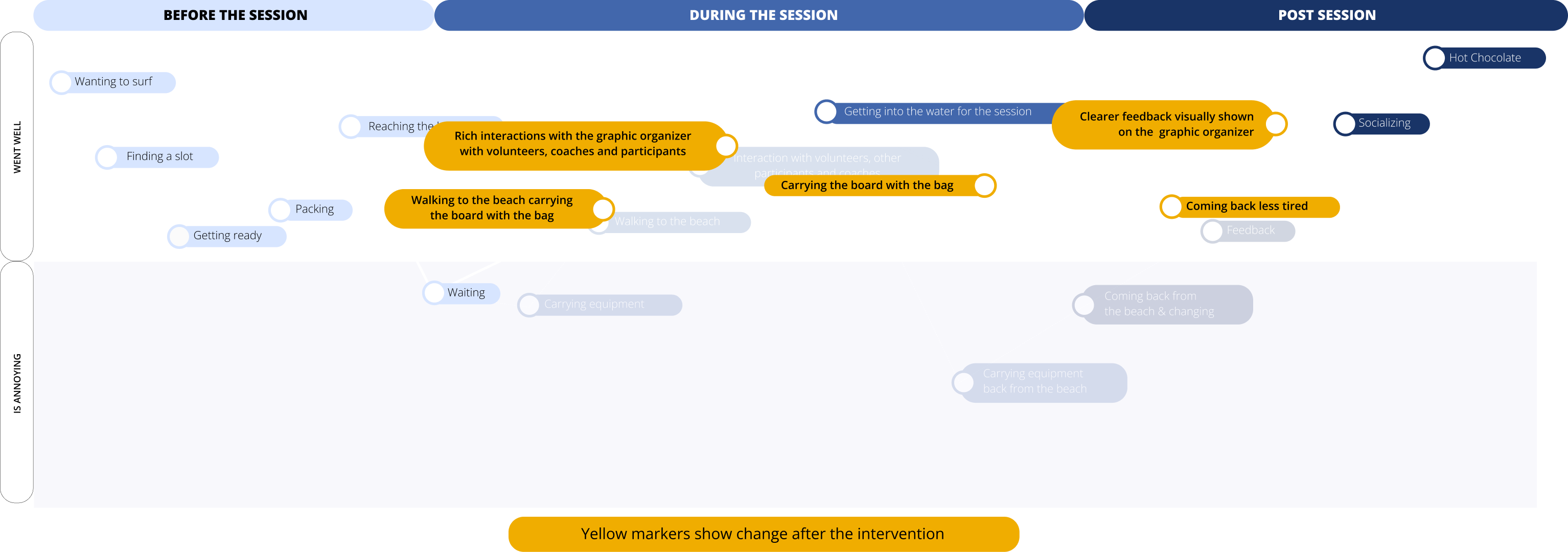
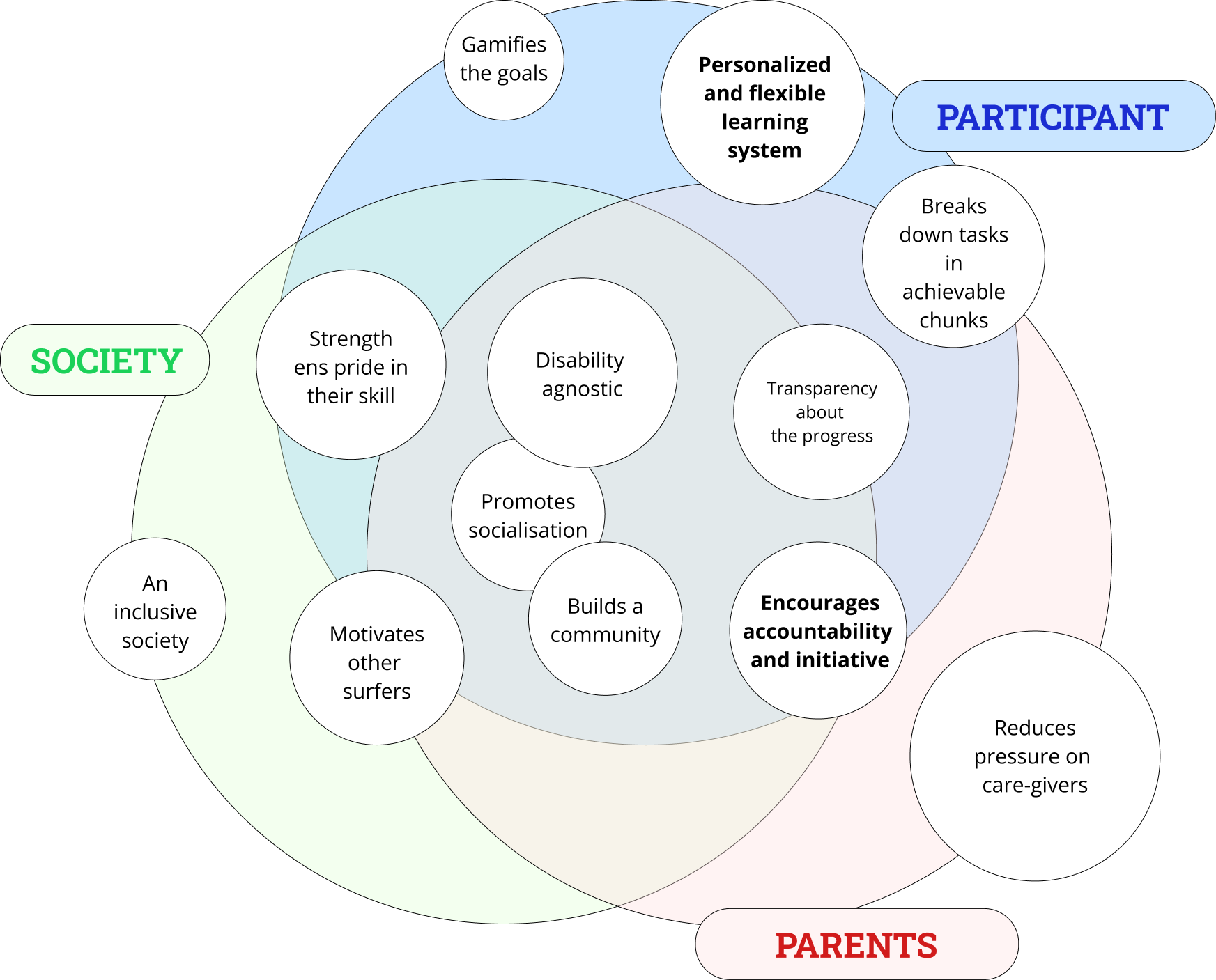
Fig. Impact Map
